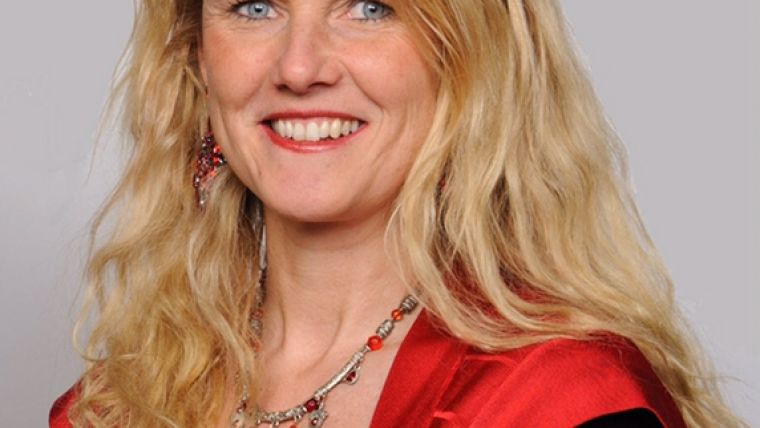GeoFort: An Educational Geo Experience Centre
Boosting the Popularity of Geo Amongst the Younger Generation
Willemijn Simon van Leeuwen is one of the founders and a director of GeoFort, a former Dutch defence fortress which has been transformed into an educational geo experience centre. At GeoFort, children of all ages learn the ins and outs of geoinformation technology and its applications. Through the success of GeoFort, Willemijn has proven she is an expert in turning seemingly dull topics into fun experiences. In this interview, she talks about her vision on geoeducation.
GeoFort recently won the prestigious Children in Museums Award 2016. What makes GeoFort so special from an educational point of view?
All the geospatial educational programmes we develop have to fulfil three objectives: ‘Sense of Fun’, ‘Sense of Urgency’ and ‘Sense of Experience’. We adhere to this very strictly. If the fun part is really good the children will explore very enthusiastically, which turns learning into an automatic process. A sense of urgency is very important because children are much more motivated if they see the relevance of what they are doing. At GeoFort they see a simulation of a flood and they have to make a good evacuation plan using digital maps. It’s serious business! And last but not least, learning is much easier when you experience it yourself. When school parties visit GeoFort, the pupils are divided into small groups and they experience a different geo-related topic together with a GeoFort teacher every 45 minutes.
You regularly refer to the concept of ‘learning by doing’. How do you teach geomatics-related topics to young children?
There is not a lot to read at GeoFort; you have to do things yourself. We ask 14-year-olds to measure the width of the moat. They get a sextant to work with and apart from that they have to use their brains to calculate the distance using the sine rule. If they have problems with maths, we tell them they can also swim to the other side to measure the width that way...Once a kid came up to me and said “Now I know what the point of maths is; it’s all about keeping dry feet!”. Of course we also let children work with GPS. First they’re asked to draw a picture on a 2D map of the fortress. We then ask them to draw that same picture by walking through the reality of the hilly fortress while being tracked and traced. It’s not as easy as they think! Afterwards they look at each other’s drawings in Google Maps and select the winning team.
Many geomatics and other geo-related degree programmes struggle to attract a fair number of students, yet some other technical fields of study appear to be more popular. What do you think could be the cause?
Many people have simply never heard of geo studies and don’t have the faintest idea about all the interesting geo-related jobs there are in the world. So there is a clear mission for GeoFort: to let a broad audience experience how interesting and relevant the geo world is in an appealing way. GeoFort not only gets this message across to children, but also to their teachers, parents, uncles, aunts and so on. They can all influence the children’s study choices. To make that decision easier, we’ve launched a website: www.gogeo.nl. After you’ve answered 20 questions about your hobbies and your character we advise you which area of study will suit you best. Of course, it’s always a geo-related field, but it can vary from GIS, geodesign, logistics, water management and 3D architecture to space engineering. That range of variety surprises people.
At what age should children start learning about geo, and how can schools, universities and other educational institutions learn from your experiences at GeoFort?
Research done by the University of Twente shows that you have to start at primary-school level if you want to get children interested in technical topics. The problem in the Netherlands is that a lot of primary-school teachers are non-technical women who tend to be a bit scared of technology. Therefore, GeoFort makes it very easy to do experiments in the classroom too: making your own compass or crushing a chocolate bar in order to understand the concept of continental drift. For those teachers who are most afraid, a visit to GeoFort is of course the best remedy. After their visit they all love geoscience! GeoFort has educational offerings for children aged 8 to 88; it’s all about life-long learning.
The geomatics industry continues to grow, and more and more geoprofessionals are expected to be needed in the future. How can the industry help educational institutions to attract more students?
Geo-related companies and institutions can help to make youngsters enthusiastic by participating in career events in schools and getting involved in academic projects. Some secondary schools in the Netherlands are so-called ‘technasiums’, in which children work on projects together with technical companies. This is a perfect way for pupils to really start enjoying the fascinating and innovative world of geo-ICT. In addition, at GeoFort we will keep developing our educational offering to further boost the popularity of geo amongst the younger generation!

Value staying current with geomatics?
Stay on the map with our expertly curated newsletters.
We provide educational insights, industry updates, and inspiring stories to help you learn, grow, and reach your full potential in your field. Don't miss out - subscribe today and ensure you're always informed, educated, and inspired.
Choose your newsletter(s)












